There is a lot of work in the garden, but the most exhausting is digging, cultivating and removing weeds. Digging starts well in advance, in small plots, as the load is too heavy. In times to reduce the complexity and at the same time speed up the process at least twice will help miracle shovel. This relatively inexpensive and simple device really works, and even on difficult soils.
Raksta saturs
What is different and what can
To be precise, it is not a shovel, but a ripper, since it does not just dig, but also breaks the clods. The miracle shovel consists of two (sometimes one) slats with pins movably connected. Some models also have a rear stop – for easier digging of dense heavy earth. So in reality it looks more like a double pitchfork (see photo below).
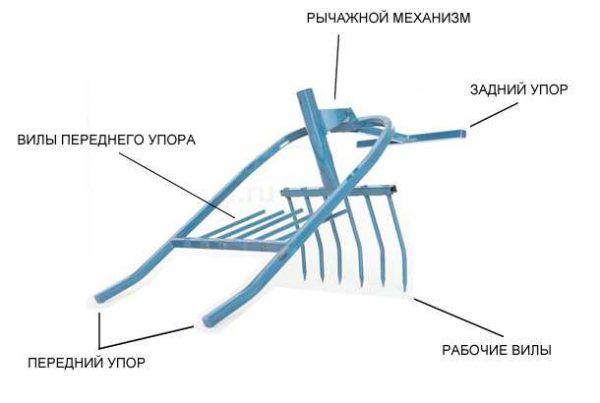
From the picture it is clear that this tool does not have a shovel as such, but the differences from the classic bayonet shovel do not end there. It also has a much higher handle – it should reach your shoulder. It is also convenient if there is a crossbar on its top – you can use both hands.
Miracle shovel performs three operations at once:
- loosens the soil;
- breaks up clods;
- “extracts” the roots of weeds without tearing or cutting them (at least much less damaging them);
- digs root crops easily – you can dig carrots, potatoes, etc.
But its main advantage – it greatly facilitates digging, and the main load is not on the back, as when using a conventional bayonet shovel, but on the legs (to drive the working forks into the ground) and on the hands (to turn the forks out of the ground). The back during work is in an upright position and is almost not loaded.
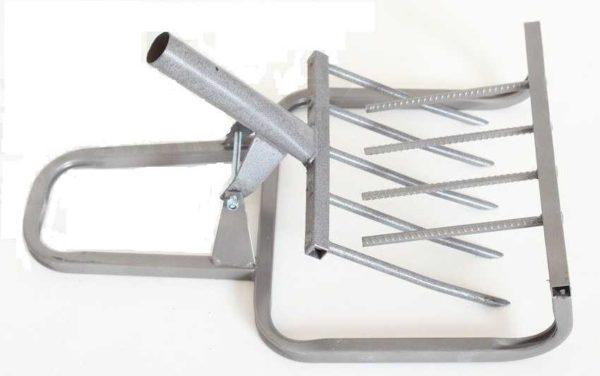
The only disadvantage of this tool is the weight. It is indeed much more than that of the bayonet. But the super shovel is repositionable, it does not need to be lifted. Or rather, it is lifted only a few times: when it is placed on the ground at the beginning of the row. Then, by pulling the handle, it is just pulled a little bit.
There is another very attractive moment in the use of a miracle shovel – digging the garden at least twice as fast. This is due to a wider working part – up to 50-60 cm. Under the condition of low physical load, this is very good.
How to work
Although this design is not particularly complex, but working with it has its own features. First, you need to start from the far edge of the bed, then move back, little by little dragging back the forks. Well, the general order of actions is as follows:
- Taking up the cuttings, put the miracle shovel, lean it on the front ripper.
- Push the pitchfork into the ground. Drive them in so that the rear stop touches the ground. If the ground is heavy and dense, additional force may be needed – push the crossbar of the front forks with your foot.
- Pull the cutterbar “towards yourself”. This movement will cause the forks to move upwards. As they rise, they pass through the front forks, breaking up clods.
- Pull the device back a little, repeat all the actions (stick, push, pull the cuttings).
In reality, everything is very simple. It is worth trying a couple of times and then everything is repeated “on automatic”.
Konstrukcijas
In addition to the variant shown above (called “Tornado”, “Zemlekop” or “Plowman”), there are several other variants of the design of the miracle shovel under different names.
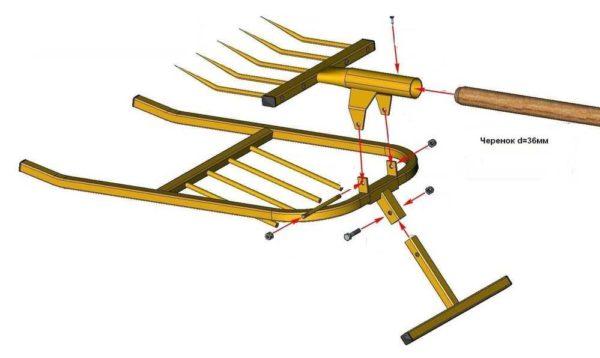
Soil loosener without front stop
This design also has working and support forks, but does not have a front stop. That is why it is less bulky and weighs a little less. But the front stop gives increased stability when working. And the weight is not so important when dragging.
The handle is attached to the working forks, the rear stop is welded to the comb of the second forks. Both of these structures are movably connected to each other (even door hinges can be used).
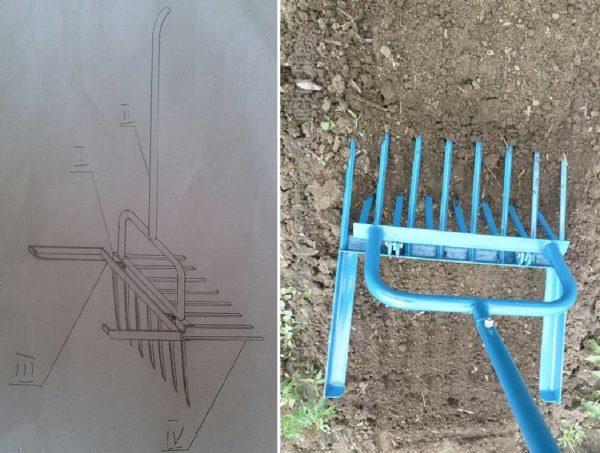
In the photo is one of the realizations, which is made on the basis of a corner and a round tube. When working, drive the pins into the ground by pressing on the crossbar, not on the stop, as in most models.
Digger
The variant called “Digging” is essentially a wide fork with a stop for easier eversion and a high powerful handle.

The peculiarity of this design is in the stop and adjustable handle. It is fixed with two bolts, adjusted to the height of the working person.
The stop is not stationary, but movable. It is fixed on the frame. When plunging the pins into the ground, it is pressed with the foot, then without removing the foot, turn the forks out of the ground by pressing on the handle.
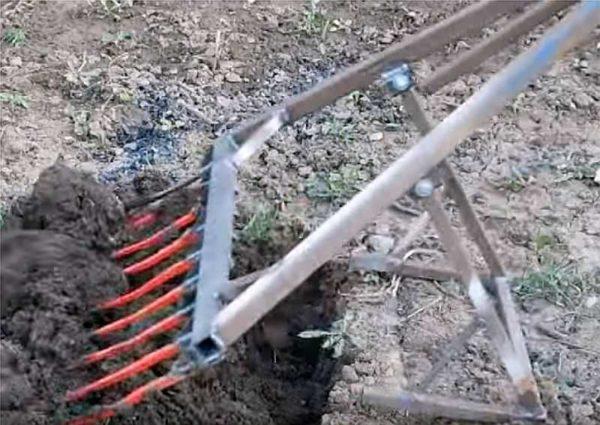
The physical load at work is low, the work progresses quickly. But this miracle shovel is not suitable for hard and lumpy soils: it does not crush the soil. It crushes the soil under its own weight through the forks. But this is possible only on loose soils. On clay or chernozem it is better to have a second comb with pins.
How to make a miracle digger see in the following video.
Light digger
This design of the miracle shovel is slightly different from the previous one. The stops in it are rounded, the handle is arc-shaped, but the basis of the design is the same. Some disadvantage – there is no possibility to adjust the handle, but otherwise everything is the same – a movable stop and working forks.
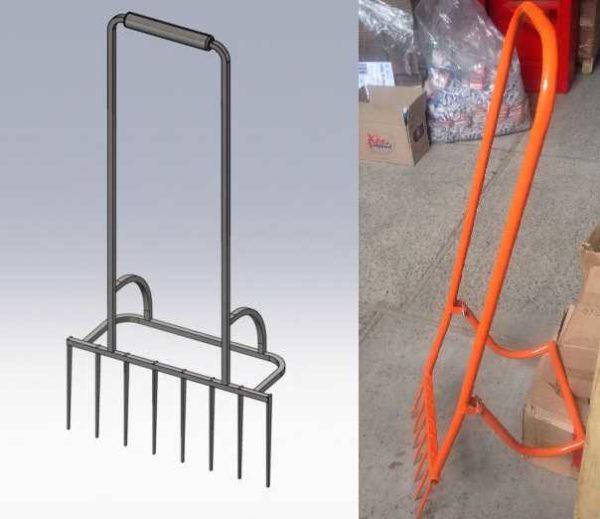
It is difficult to say whether this variation is better or worse. It would be possible to assess only by comparing the work of both copies on one plot.
If you watch the following video, you will see that you can dig with such a miracle shovel not only loose soils, but also heavy soils. And the second thing you can pay attention to – still for such soil it is better to have a second comb of pins, against which you can crush the dislodged lumps.
From what and how to make
Designs, as you have seen, are different, but the set of materials will be approximately the same. Their quantity differs, and the cross-section and characteristics remain the same.
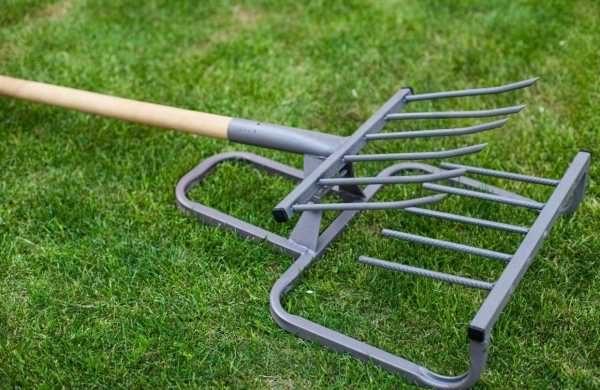
Materials for manufacturing
Start mainly with the manufacture of the frame. It is more often made of profiled pipe, the optimal cross-section is 30*30 mm or so. Important in this case is the thickness of the wall – at least 3 mm. In some models used a corner. The width of the shelf is also about 30 mm, the thickness of the metal – not less than 3 mm.
The handle can be made from the same profile pipe, you can use a round one. The thickness of the walls is also important. In principle, having made a fixture, you can use a wooden holder from a shovel. Some purchased models provide for the installation of a wooden holder.
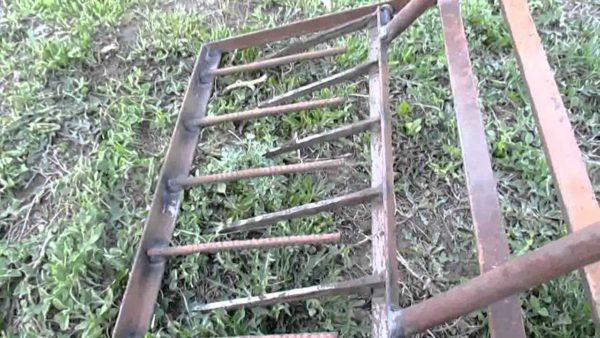
The main attention should be paid to the material that is used for the tines of the working forks. It should be a good structural steel. Forks are made from a bar of at least 8 mm in diameter.
From what do skillful people make them:
- Cut off from ordinary forks, welded on the miracle shovel.
- Straighten the suspension springs.
- Saw into narrow strips of car springs.
If you manage to find a good bar – round, square or hexagonal – it does not matter, you will be much easier. Not a bad option, by the way, with forks. But you need to take a good one, and this is not cheap. And one more thing: calculate the size of the miracle shovel so that the working forks have 8 pins. Then you will need to buy two jokes of ordinary forks.
If the design is chosen with two forks – working and thrust forks, on the thrust forks you can put pieces of suitable length of metal bar. The loads here are not so high, so the strength should be enough. The diameter of the bar is 10 mm, you can use ribbed rebar, which is used for reinforcing the foundation.
Izmēri
Most companies that produce miracle shovels have a range of sizes of this product. We have different people in terms of build and physical fitness. For men, more massive models can be made, and for women and the elderly – smaller and lighter. On average, the sizes are as follows:
All other sizes are selected depending on the design and the material used.
Zīmējumi
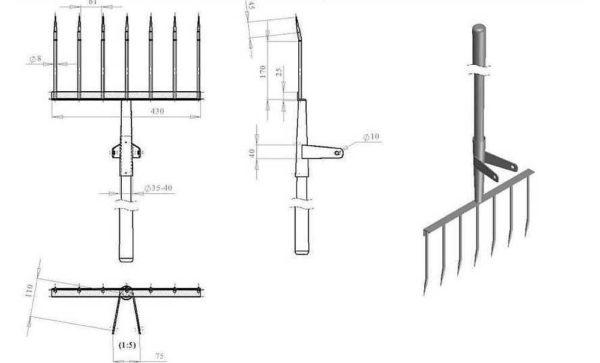
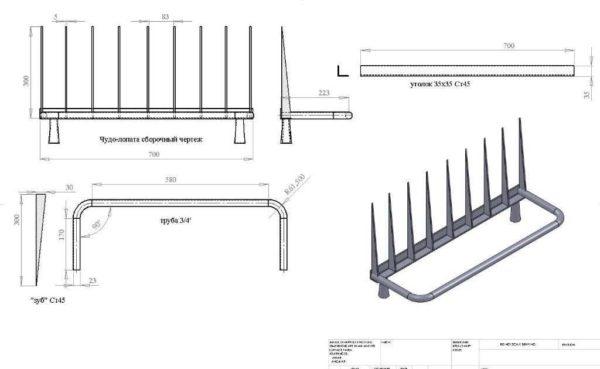
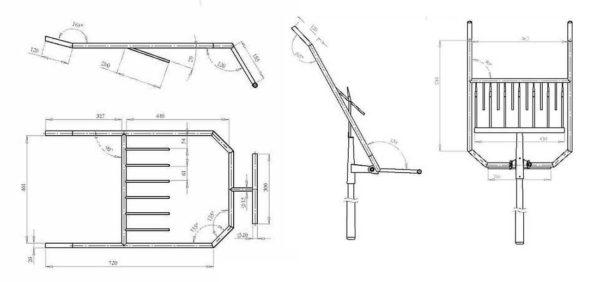
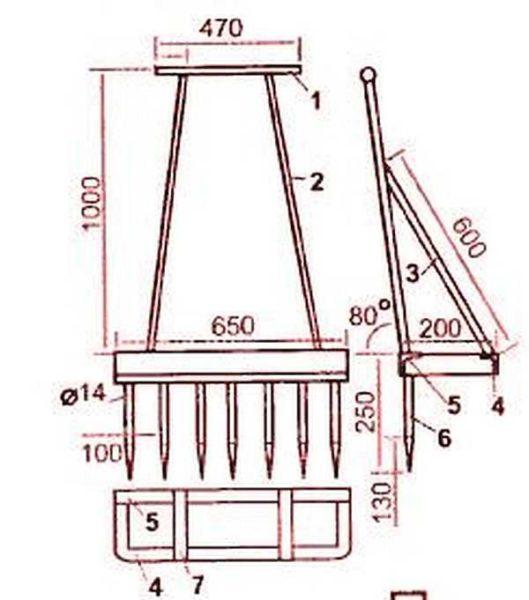
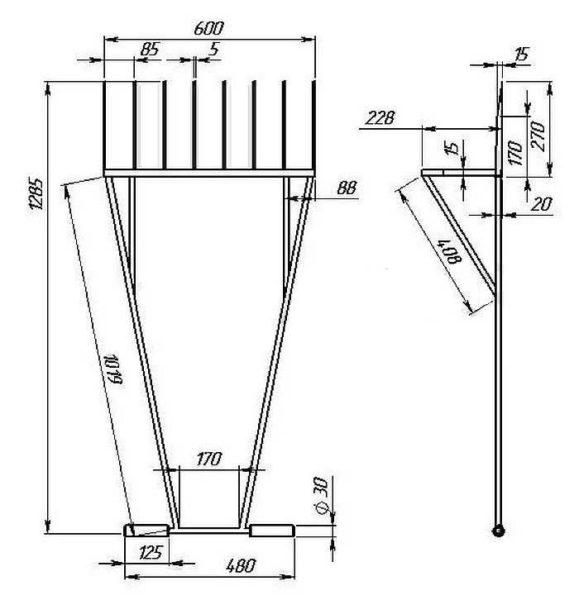
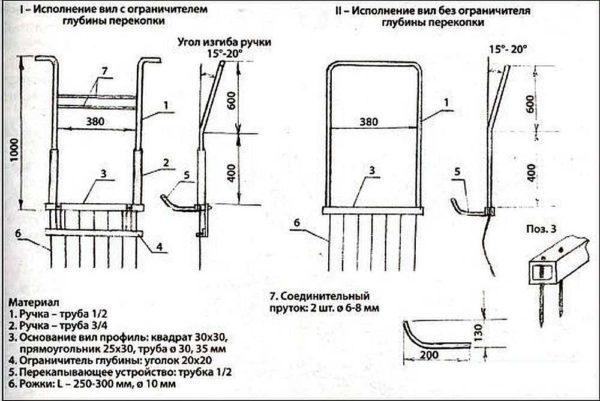

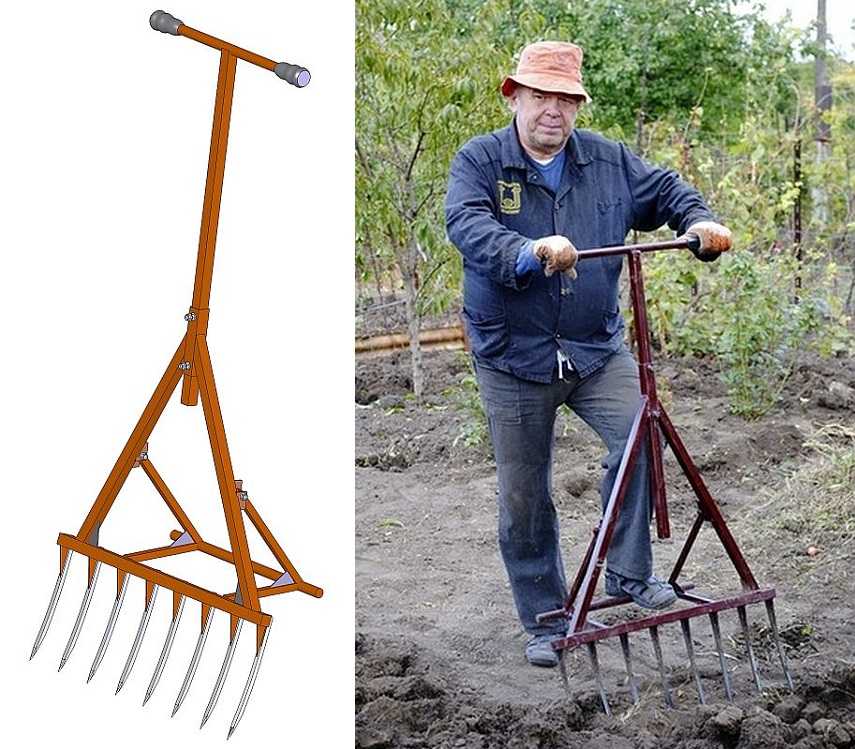



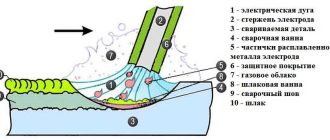

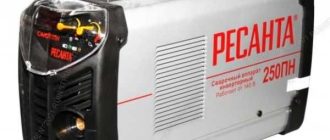
Wow, making a miracle shovel sounds awesome! I once crafted a homemade tool for my garden, and it was a game-changer! The satisfaction of digging in and seeing my hard work pay off was unreal. Can’t wait to try this ripper idea; it’ll be a blast!